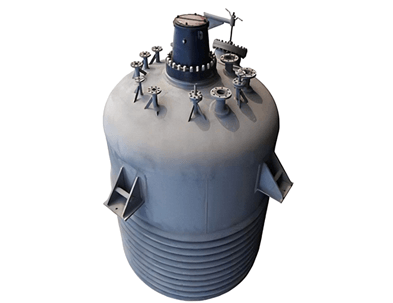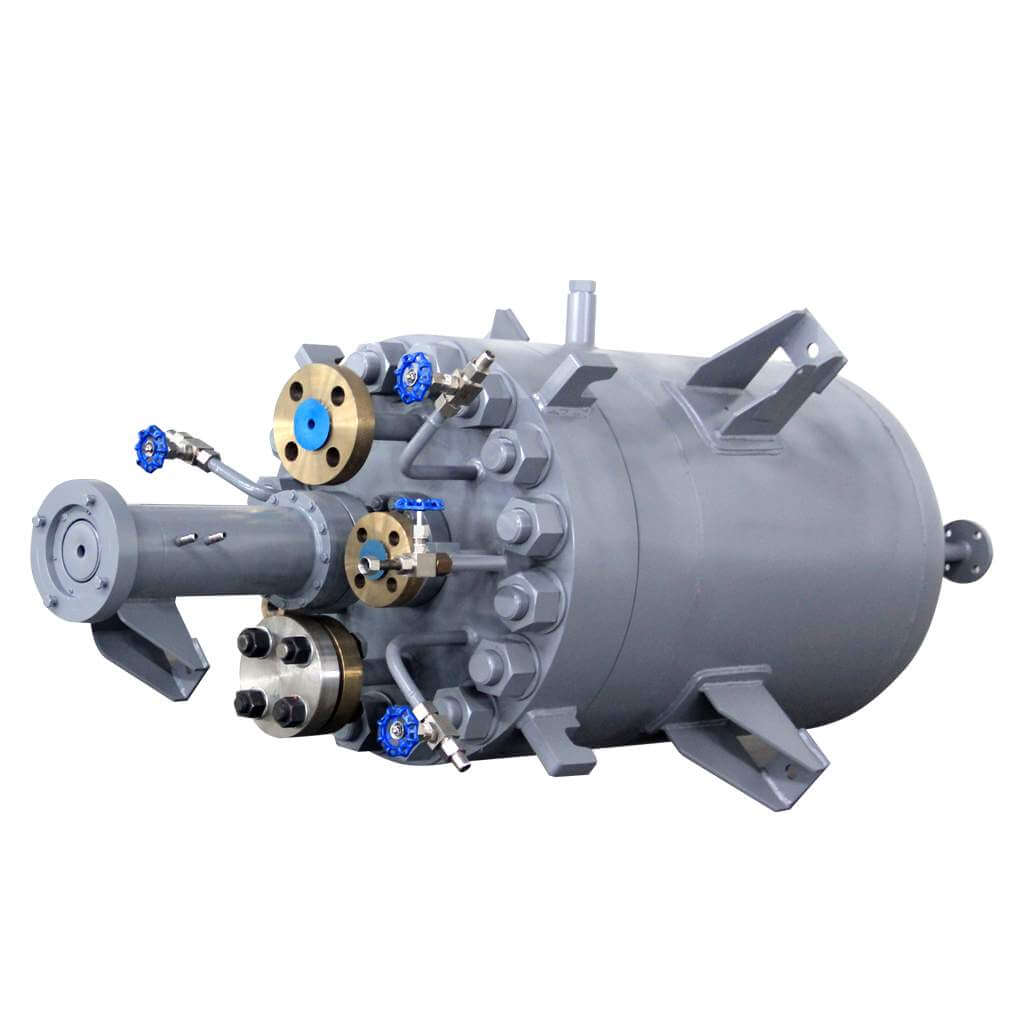

Hydrogenation Reactor
Hydrogenation Reactor:used in chemical synthesis, pharmaceutical manufacturing, food processing, and other fields.
Material
stainless steel (316, 304), carbon steel, others
Capacity (L)
10-10000+
Mixing system
anchor, paddle, frame and others
Heating system
electric heating, oil heating and others
Hydrogenation reactors are widely used in various catalytic reaction speeds, high-pressure and high-temperature generation, hydrogenation reactions, vapor-liquid two-phase, liquid-liquid two-phase, chemical reactions, corrosion detection, precision processing, supercritical extraction, and other applications. Mainly distributed in petrochemical equipment, organic chemistry, pharmaceutical industry, polymer synthesis, metallurgical industry, and other industries. At the same time, it has the characteristics of heat resistance, corrosion resistance, and high production capacity.
Request a quoteA hydrogenation reactor is essentially a stainless steel physical or chemical reaction vessel. Through the structural design and parameter configuration of the container, functions such as heating, evaporation, cooling, and low-speed, and high-speed mixing are realized. There are also different vessel design requirements for pressure requirements during subsequent reactions.
The manufacturing structure of the hydrogenation reactor is mainly composed of three small chemical reactors: open flat cover reactor, open butt welding flange reactor, and closed reactor. It consists of a heat insulation layer, a support drive device, a shaft seal device, etc.
Due to different production processes and operating conditions, the process opening, mixing type (paddle type, anchor type, frame type, screw type), support type (suspended or supported type), and the sealing device body of the cover and cylinder can be designed separately.

Precautions for using hydrogenation reactor
The temperature control system should be used in strict accordance with the working environment pressure and working methods specified on the product nameplate to avoid danger. Strictly abide by the regulations on cooling, oiling, etc. in the relevant product instruction manuals, and do a good job in the maintenance and upkeep of teaching equipment.
When using all valves in the hydrogenation reactor, slowly rotate the valve stem (needle) and press the valve cover tightly to achieve a sealing effect. Do not use excessive force when closing to avoid damaging the sealing surface. Electrical control instruments should be operated by dedicated personnel, and overload protection facilities should be installed as required.
Precautions for hydrogenation reactor
1.When operating the hydrogenation reactor for the first time, at least one operator who is proficient in the hydrogenation reactor must be present.
2.On-site personnel must wear cotton gloves and spike-free shoes.
3.Please do not bring explosive or spontaneous combustion items such as mobile phones, lighters, MP3 players, etc. into the hydrogenation work area.
4.When working near hydrogenolysis, managers should handle tools and parts with care and avoid being hit hard at the same time to cause sparks.
5.During the pressure relief process, the waste gas from the hydrogenation reactor should be pumped into the outdoors or into a fume hood with a hose.
Installation of hydrogenation reactor
1.Check whether there are any flammable and explosive items inside and outside the kettle and whether there are any items that are not conducive to air circulation. If there is, delete it.
2.Check whether the valve and kettle are clean. If not, wash them.
3.Close all valves in the enterprise except the exhaust valve, and start feeding. After the feeding is completed, cover the kettle lid. When rotating the nut, pay attention to using even force to ensure that the two diagonal screws can be tightened separately. Others prevent leakage after sealing.
4.Close the exhaust valve. Check the device for air tightness. Close all valves, cover the lid, use even force when turning the nut, and ensure that the two diagonal screws are tightened to each other to prevent air leakage after tightening. Open the air inlet valve and vent nitrogen to 1MPa, close the air inlet valve, observe the pressure change, and confirm whether the device is leaking.
Hydrogenation method of hydrogenation reactor
1.Check that all valves are closed.
2.Route the exhaust hose directly to an open area with good ventilation.
3.On the hydrogen pressure safety valve, note that the thread of the hydrogen pressure valve is threaded. Close the nitrogen pressure valve and check for leaks with soapy water. If it leaks, close again.
4.Use a vacuum cleaner to extract the air from the liquid surface at the exhaust port.
5.Open the inlet valve of the hydrogenation reactor and open the nitrogen vacuum valve. After the pressure in the kettle is P=0.2Mpa, turn off the nitrogen. Close the inlet valve and keep it for about 2 minutes. Check the pressure gauge to see if the pressure drops. Listen to the valve and bottle. Check whether the cover is leaking. If there is no leakage, slowly open the exhaust valve. When the internal pressure is 0.01Mpa, close the exhaust valve.
6.Repeat the above steps once.
7.Open the air inlet valve, open the hydrogen pressure reducing valve, charge hydrogen to the required pressure, close the air inlet valve, close the hydrogen pressure reducing valve, and then adjust other parameters to the required state to allow it to react.
Hydrogenation reactor control sampling
1.Observe whether the data is normal every half hour. If the pressure drops, hydrogen must be added.
2.When the hydrogen gas in the hydrogen cylinder cannot be discharged, a certain pressure must be ensured. When P≈0.01Mpa, the new bottle should be scrapped.
3.Take samples. Slowly open the exhaust valve. When the pressure in the hydrogenation reactor kettle can be reduced to 0.2Mpa, close the exhaust valve, slowly open the sampling valve until the reaction liquid emerges, close the sampling valve for sampling time, and then pass the cleaning personnel. Leave some flammable items behind.
Hydrogenation reactor releases hydrogen
After confirming the reaction, slowly discharge the hydrogen, pay attention to the internal pressure, close the exhaust valve, do not enter oxygen, open the inlet valve, enter nitrogen 0.2Mpa, close the inlet valve, and then slowly open the exhaust valve to release the hydrogen. Mix the gases and input nitrogen. After doing this three times, the vacuum pump will discharge the gas on the liquid surface, then open the exhaust valve and sampling valve, starting from the bottom valve. Note that some substances are prone to spontaneous combustion in oxygen, such as Pa/c and RaneyNi, so avoid spraying outside the container. If there is a leak, please soak it with a wet towel immediately, put it into a bucket filled with water, and then use a small amount of dilute acid to destroy it. Once loose, close the bottom valve immediately.
Disassembly and cleaning of the hydrogenation reactor
1.The reaction solvent enters the hydrogenation reactor kettle from the exhaust valve, removes most of the residue, and enters the hydrogenation reactor kettle for stirring for 10 minutes. At this time, you can open the lid on the wall of the pot.
2.When cleaning, the cover and sampling valve must be cleaned. When there is water in the pot, it should be slightly filled with nitrogen.
3.For the hydrogenation reactor that is not used temporarily, it is best to add 70% volume of very clean absolute ethanol to the hydrogenation reactor for soaking.




